 Rule High School opened in 1927. It was named after Captain William Rule, a former Union Army captain who went on to be mayor of Knoxville and the editor of the Knoxville Journal.
Rule High School opened in 1927. It was named after Captain William Rule, a former Union Army captain who went on to be mayor of Knoxville and the editor of the Knoxville Journal. 
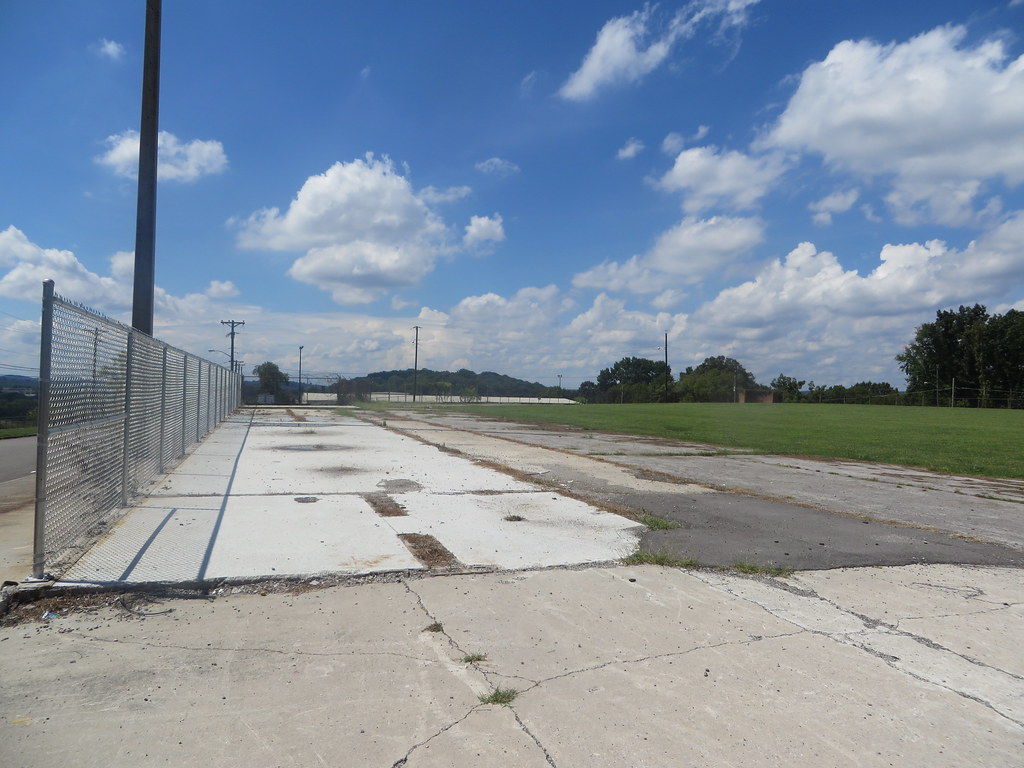 //embedr.flickr.com/assets/client-code.js
//embedr.flickr.com/assets/client-code.js
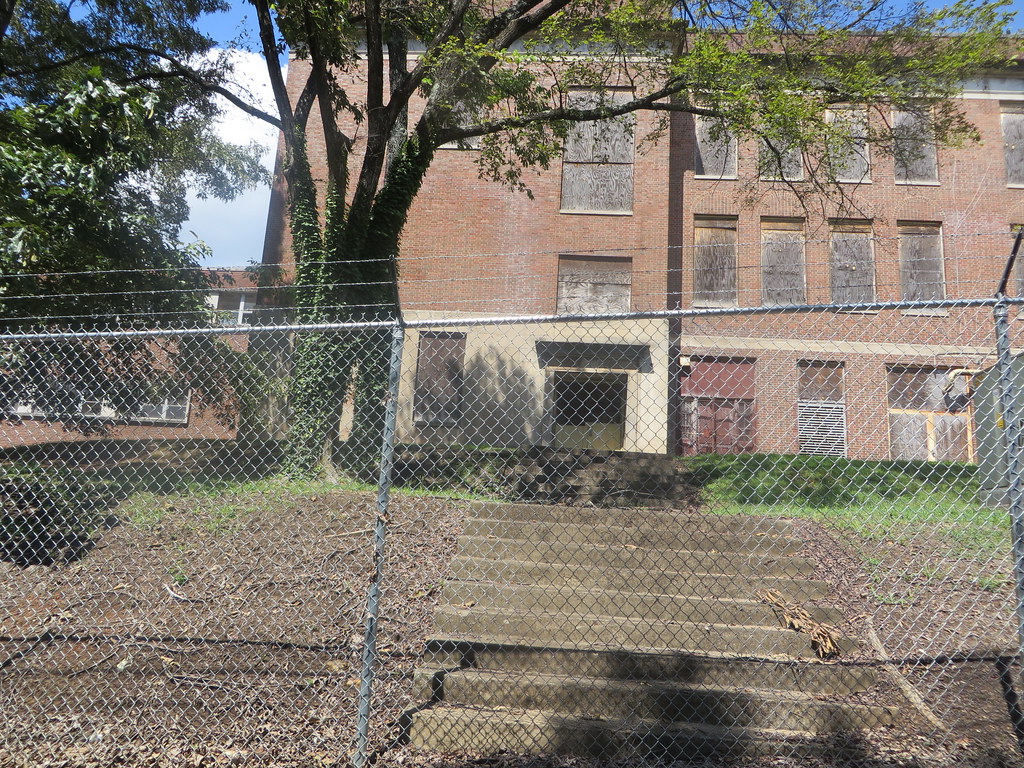 //embedr.flickr.com/assets/client-code.js
//embedr.flickr.com/assets/client-code.js
The first addition was finished in 1949, and the second addition was completed in the 1970s.

However, the school closed in 1991 due to low enrollment numbers.
Category: Schools
Old Rosemont School — Bristol, Tennessee
This building served as the Rosemont Elementary on Bristol, Tennessee’s north side from 1930 until the early 1980s. The three story building was constructed in 1929 and consists of 32,640 square feet.
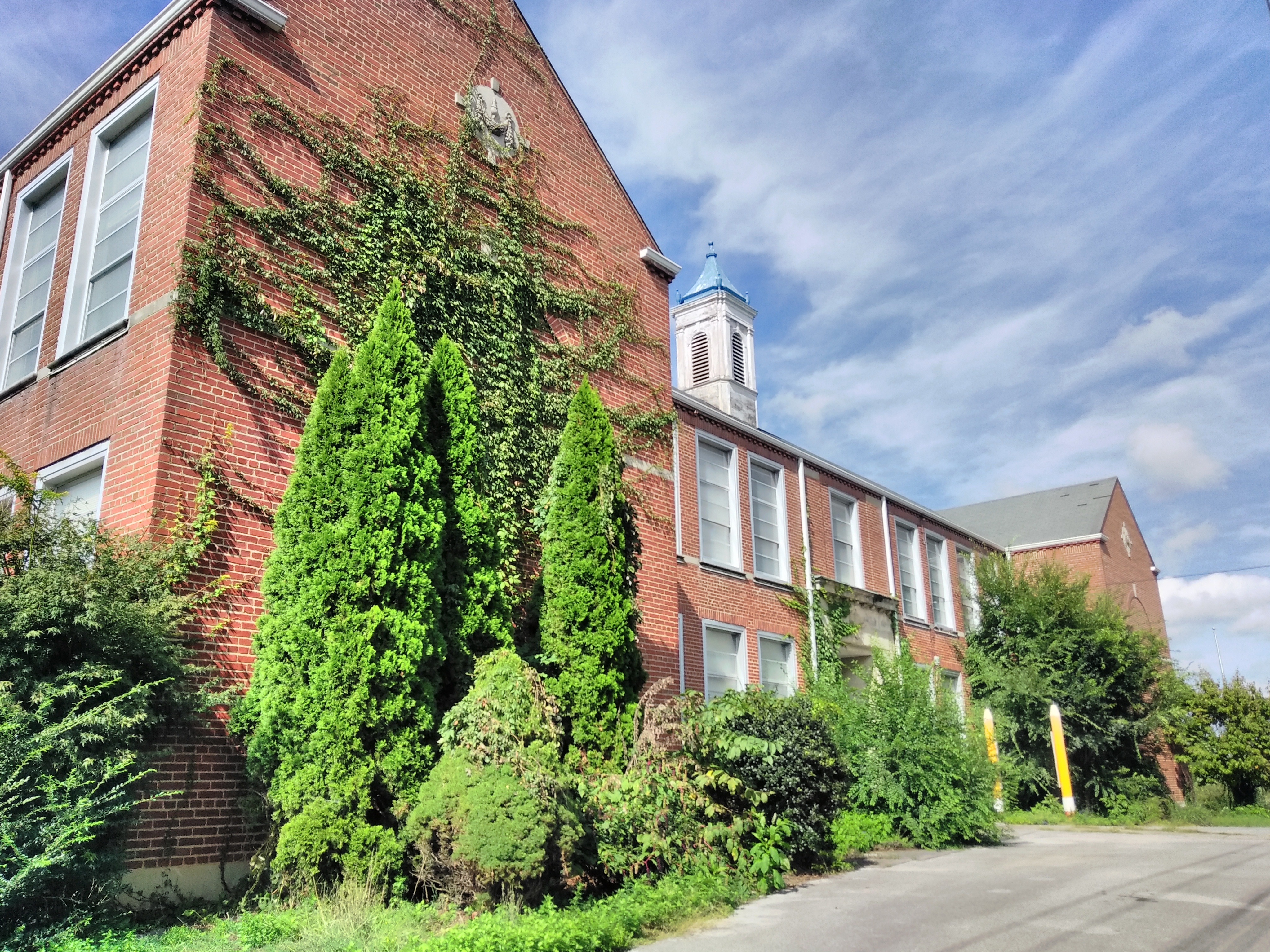 Once this building was replaced by the local school district it was sold to the Tri Cities Christian School which operated here from 1984 until 2009.
Once this building was replaced by the local school district it was sold to the Tri Cities Christian School which operated here from 1984 until 2009. 
Since 2009 the building has sporadically served as a community center. More often though, the building has been the subject of vandals.
 The building is currently for sale.
The building is currently for sale. 
Knoxville College — Knoxville, Tennessee
This was a visit a long time in the making. Longer than it should have taken. I’ve been fascinated with this campus for a several years and finally took the time to visit several weeks ago.
Knoxville College roots can be traced to a mission school established in Knoxville in 1864 by R. J. Creswell of the United Presbyterian Church to educate the city’s free blacks and freed slaves. This school initially met in the First Baptist Church building (which at the time was located on Gay Street) before moving to a permanent facility in East Knoxville in 1866. In spite of general apathy from the city’s leaders and threats from poor whites, the school’s enrollment gradually grew to over 100. In addition to black students, the school also had many white students until 1901, when Tennessee passed a law forcibly segregating all schools. That same year Knoxville College finally received a charter from the State of Tennessee. Six years later, the school established the Eliza B. Wallace Hospital, which served a dual purpose of training nurses and tending to the health needs of the local black community. This proved invaluable during the city’s Influenza outbreak of 1918.
In 1980, eight buildings on the Knoxville College campus were listed on the National Register of Historic Places as a historic district for their role in minority education. Many of the earliest buildings were constructed using student labor, student-made bricks, and lumber donated by alumni. The district includes the following buildings:
- McKee Hall, the oldest building on campus, originally built in 1876, largely rebuilt in 1895 following a fire. The building is named for the Reverend O.S. McKee, who had established the first school for African-American children in Nashville in 1862. This building currently houses administration offices.
- The President’s House, built in the late 1880s. The house was originally built of wood, but brick siding was added in 1905.
- Wallace Hall, built in 1890 as an orphanage. This building is named for Eliza B. Wallace, the school’s principal of female students, 1877–1897.
- Elnathan Hall, built in 1898 following the destruction by fire of the original Elnathan Hall, and altered in 1905 and 1971. This building has served variously as a women’s dorm, administration building, and classroom building.
- Two Faculty cottages, 1005 and 1009 College Street, both built in the style in 1906.
- McMillan Chapel, built in 1913, designed by Knoxville College alumnus, William Thomas Jones. Along with church services, the chapel served as the campus’s primary performance venue. Notable guests who have delivered speeches at the chapel include George Washington Carver, Countee Cullen, W. E. B. Du Bois, Jesse Owens, William H. Hastie and Jackie Robinson.
- Giffen Memorial Gymnasium, built in 1929.
In 2016, the preservationist group Knox Heritage placed the Knoxville College Historic District on its “Fragile Fifteen,” a list of endangered Knoxville-area historic properties.
Beginning in the 1970s, Knoxville College began to struggle financially, leading to a gradual decline. In 1997, the Southern Association of Colleges and Schools withdrew Knoxville College’s accreditation. Enrollment dropped precipitously and the school’s financial situation became dire. As enrollment plummeted, the school’s debt skyrocketed and it was soon unable to pay its faculty or electric bills. Throughout the rest of the 1990s, as enrollment plummeted, most campus buildings were shuttered and abandoned, and most degree programs were discontinued. On June 9, 2014, the Environmental Protection Agency seized control of the long-shuttered A.K. Stewart Science Hall to conduct an emergency clean-up of toxic chemicals that the college had improperly stored in laboratories; In April 2015, the school announced it was suspending classes for the Fall 2015 term in hopes of reorganizing. Enrollment had dwindled to just 11 students, and the college was struggling to pay back a $4.5 million loan from 2003 and more than $425,000 to the federal government for the Stewart Science Hall cleanup. In May 2015, the school announced classes would resume in the Fall 2016 term. That never happened.
In September 2016, the City of Knoxville demanded that Knoxville College make repairs to fourteen of its buildings within 90 days or face condemnation. City crews subsequently boarded up the buildings. The Knoxville Fire Department responded to between four and five fires at abandoned buildings on campus in 2016, and estimated that since the buildings began falling into disuse after 1997, they had responded to twenty or thirty such fires there.
 Today most of the campus sits abandoned, in an advanced state of disrepair. Most buildings are open to vagrants and vandals. This has caused severe damage to the buildings. The former college center has been set on fire twice. Since early 2018 The College administrative offices are back on campus again, occupying The college Annex which is next to McMillan Chapel. Plans have been made to renovate McMillan chapel and the Alumni Library. This is scheduled to take place in 2019.
Today most of the campus sits abandoned, in an advanced state of disrepair. Most buildings are open to vagrants and vandals. This has caused severe damage to the buildings. The former college center has been set on fire twice. Since early 2018 The College administrative offices are back on campus again, occupying The college Annex which is next to McMillan Chapel. Plans have been made to renovate McMillan chapel and the Alumni Library. This is scheduled to take place in 2019. 






On The 1st of July 2018 Knoxville College posted on its website that it is again enrolling students for its fall 2018 semester. According to the school’s website that semester began on Tuesday September 4. There is no information about classes offered, nor the process for admissions to the college, leading one to think the new semester never actually began.
Fairview School — Scott County, Virginia
 The Fairview school is located in Scott County, Virginia about 9 miles south of Duffield on Fairview Road, (VA Route 623).
The Fairview school is located in Scott County, Virginia about 9 miles south of Duffield on Fairview Road, (VA Route 623). 
This school was constructed in 1953 and served students K-12 at that time. The school was closed at the end of the 1989-90 school year.
 Luckily the school board returned the building to the county government and the building has been in use as a community center and also serves as an outpost for the Scott County Sheriff’s Department.
Luckily the school board returned the building to the county government and the building has been in use as a community center and also serves as an outpost for the Scott County Sheriff’s Department. 
Sadieville Elementary School — Scott County, Kentucky

Since starting this blog in 2014, I have covered nearly 80 abandoned school buildings in 9 states stretching from Eastern North Carolina to the banks of the Mississippi River in Cairo, Illinois. Today, while researching for my newest entry covering the Sadieville School in northern Scott County, (Kentucky), I came across something I had yet to find in the reason a school was closed. Enrollment was getting too high. 90% of the schools I have visited have been closed due to the opposite, declining enrollment.
I always thought it was rather odd that a school in the fastest growing county in the entire state would be closed and abandoned. In 1984-85 Sadieville was home to 150 students. By 1988 that number had jumped to 245.
The Scott County School System decided to build a larger, more modern facility to serve northern Scott County located about 5 miles south of Sadieville. Construction was swift and by March 5, 1990, Sadieville was closed and it’s students and staff had moved to their new school, Northern Elementary.
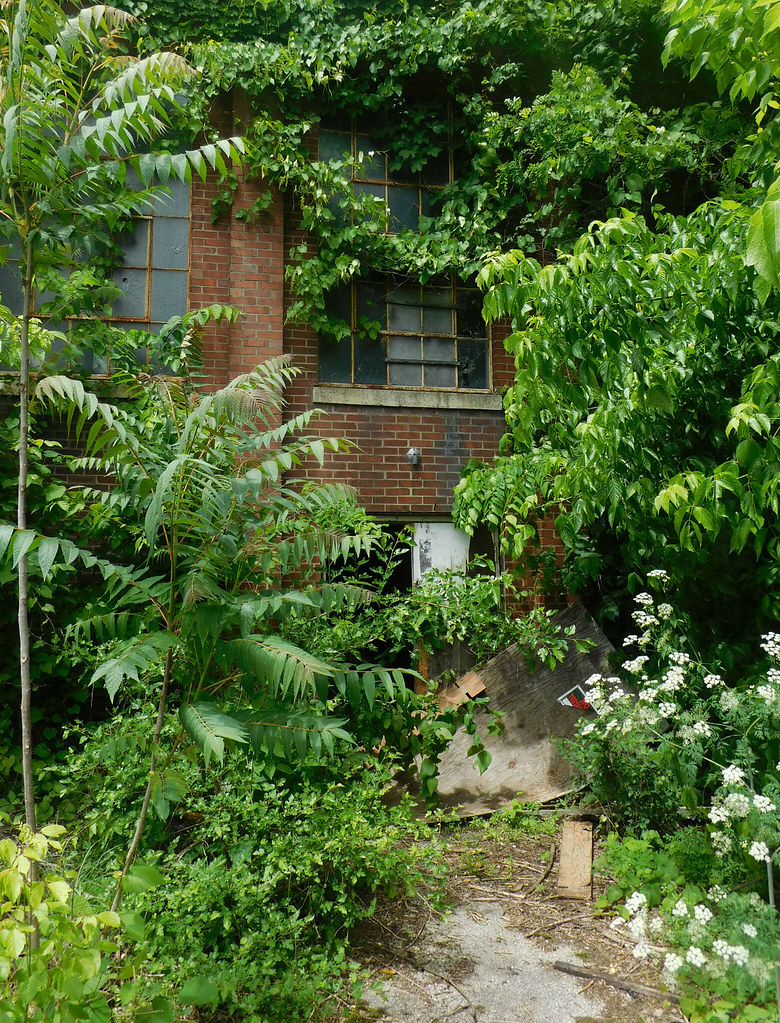
 The last 28 years have not been kind to the campus. The grounds are overgrown, the front of the building is almost covered by brush and trees that have popped up. But considering the building is closing in on being 100 years old, its still standing and relatively structurally sound once you take out of consideration the roof and especially the gymnasium area.
The last 28 years have not been kind to the campus. The grounds are overgrown, the front of the building is almost covered by brush and trees that have popped up. But considering the building is closing in on being 100 years old, its still standing and relatively structurally sound once you take out of consideration the roof and especially the gymnasium area. The school has obviously been used as a storage building but has now fallen victim to faulty ceilings and vandalism.
The school has obviously been used as a storage building but has now fallen victim to faulty ceilings and vandalism. 


I dont know if there were any windows that were still fully intact.



Big Creek Elementary — Perry County, Kentucky
Its rather odd to find three school districts who border each other have a school by the same name in all three. That was the case in Clay, Leslie and Perry County Kentucky until several years ago. I have already covered the closed Big Creek Elementary School in Leslie County in this blog. That school closed several years ago. The school covered in this entry is the Big Creek Elementary that was located in Perry County.
 The school is located near the intersection of Kentucky 80 and Kentucky 1096 in the community of Avawam about 8 miles west of Hazard near the Perry/Leslie County line.
The school is located near the intersection of Kentucky 80 and Kentucky 1096 in the community of Avawam about 8 miles west of Hazard near the Perry/Leslie County line. 
Big Creek Elementary was closed in 2014 due to declining enrollment and a planned consolidation of schools in Perry County. At the end of the 2013-14 school year Big Creek was home to 136 students in grades K-8.

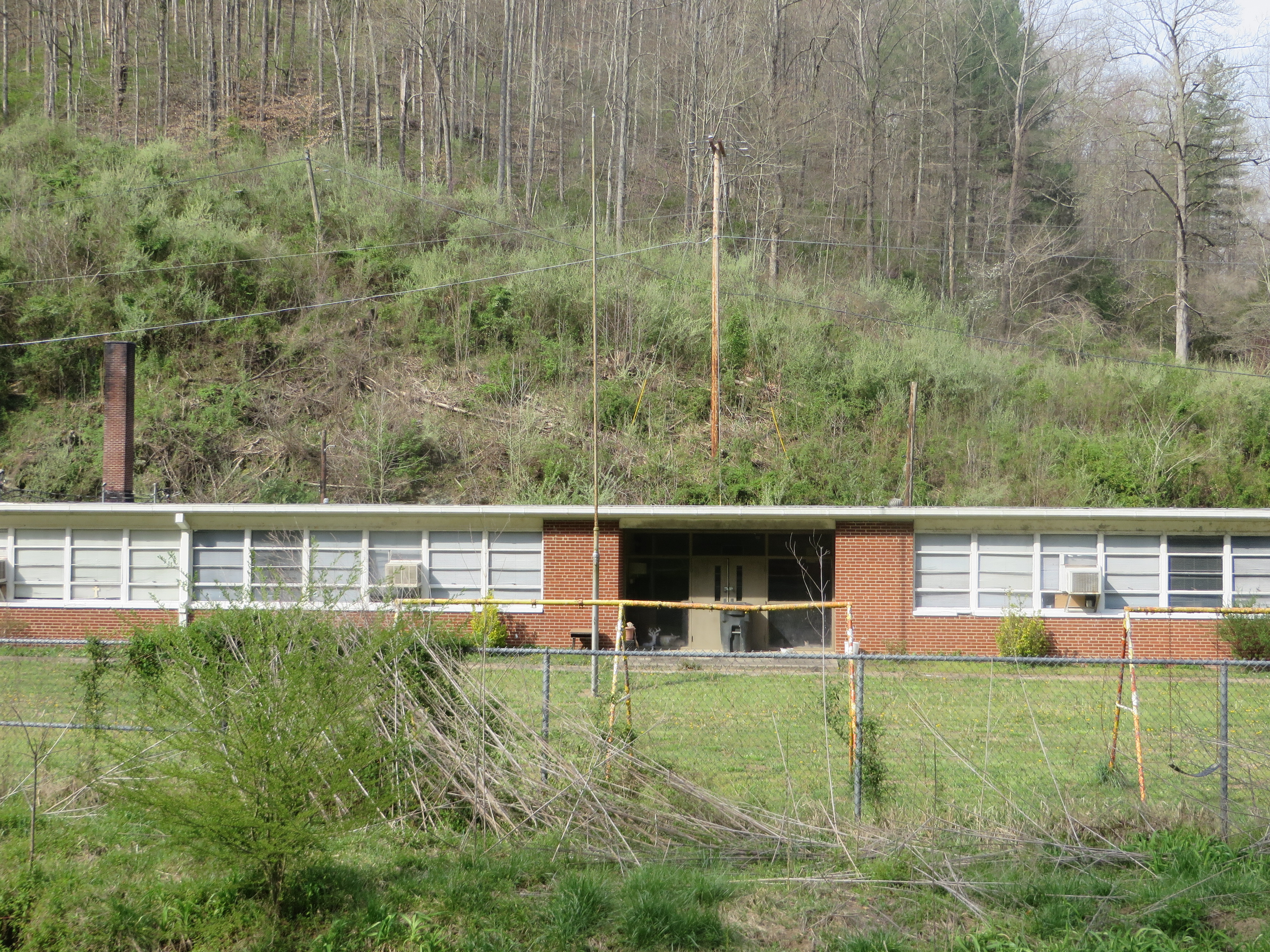
Shields High School Gym — Seymour, Indiana
 In November of 1937 construction began on a new gymnasium for the Seymour Indiana high school then known as Sheilds High School. The new gym was completed as a WPA project in 1938 and provided the high school and community with a modern, fire-proof gymnasium with a seating capacity of over 3,300.
In November of 1937 construction began on a new gymnasium for the Seymour Indiana high school then known as Sheilds High School. The new gym was completed as a WPA project in 1938 and provided the high school and community with a modern, fire-proof gymnasium with a seating capacity of over 3,300. 
The gymnasium continued to serve Shields High School until 1959, when the high school moved to a new campus and changed its name to Seymour High School.
 Upon the moving of Sheilds High School, the gym, and main school building which use to stand directly beside the gym were transformed into the new Sheilds Middle School.
Upon the moving of Sheilds High School, the gym, and main school building which use to stand directly beside the gym were transformed into the new Sheilds Middle School. 
The buildings remained in service to the community in this function until 1981 when the new Seymour Middle School opened.
 The main part of the Sheilds High School was demolished in 1998.
The main part of the Sheilds High School was demolished in 1998. 
The gymnasium remains standing on 6th Street to this very day.

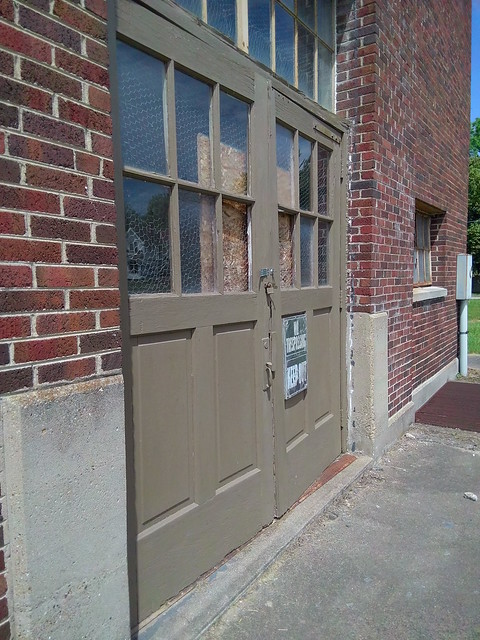
Sue Bennett College (CLOSED) — London, Kentucky
Sue Bennett College was a private college located in the southeastern Kentucky town of London in Laurel County. The school first opened in 1897 as an elementary school.
 In 1922 the school became a junior college and recieved accredidation. The school remained affiliated with the United Methodist Church throughout its operation.
In 1922 the school became a junior college and recieved accredidation. The school remained affiliated with the United Methodist Church throughout its operation. 
In 1991 a new president was elected who pushed for the expansion of athletic programs and a business degree program. The new programs and atheletic offerings were implemented in hopes of increasing enrollment, but that never materialzed and the college fell into debt.
 After many financial and legal problems on September 22, 1997 the acredidation was stripped from the college.
After many financial and legal problems on September 22, 1997 the acredidation was stripped from the college. 
By October 6th the United States Department of Education imposed an emergency action against Sue Bennett College, issuing a Notice of Intent to Terminate the institution from participation in the federal student financial assistance programs authorized by Title IV of the Higher Education Act of 1965. The college requested a hearing to appeal that proceeding. The appeal was based on SBC’s pending litigation versus the Eastern District of Kentucky to have the Southern Association of Colleges and Schools reinstate its accreditation. However, Judge Richard I. Slippen rejected SBC’s request, and thus the possibility of continued federal financial assistance was dead, as was hopes of remaining open. Upon further research for this article I discovered the college was sold in 2014. Until that time it had been used for community college and Union College classes. The link to the article announcing its sale can be found by clicking HERE. Further reading can be found on my friends blog at abandonedonline by clicking HERE
Corydon Elementary School — Henderson County, KY
Brookside Elementary School — Sullivan County, Tennessee
Brookside Elementary School was located in the Bloomingdale community of Sullivan County, Tennessee just north of Kingsport.
 Sullivan County has been prone to school consolidation over the past several years. These consolidations have not came because of declining population, but mostly due to annexation by the city of Kingsport. In 2009 this specific community, Bloomingdale had 5 schools operating as part of the Sullivan County schools. Now there is one elementary school (K-8) and one high school which itself has became center of consolidation discussions for the better part of the past decade.
Sullivan County has been prone to school consolidation over the past several years. These consolidations have not came because of declining population, but mostly due to annexation by the city of Kingsport. In 2009 this specific community, Bloomingdale had 5 schools operating as part of the Sullivan County schools. Now there is one elementary school (K-8) and one high school which itself has became center of consolidation discussions for the better part of the past decade. 
When Brookside closed at the end of the 2011/12 school year there were 233 students enrolled. Those students were moved to Ketron Elementary a couple of miles away the following year.




